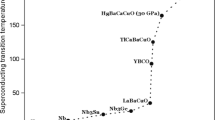The first systematic studies of the dependence of electrical resistance on temperature had been undertaken by L.P. Cailletet (1832–1913), E. Bouty (1846–1922) and Z.F. Wroblewski (1845–1888) in 1885. Their researches led them to the assertion that it would not be unreasonable to expect a zero value for the resistance for a temperature higher than −273°C. The next set of exhaustive measurements of the electrical resistance of various metals were performed by James Dewar (1842– 1923) and John Ambrose Fleming (1849–1945). In 1896 they completed a study of the resistance of mercury at liquid air temperature, and their results indicated that the resistance of mercury could vanish at zero degrees Kelvin.
After having liquefied helium in 1908, Heike Kamerlingh Onnes (1853–1926), in 1911, at Leiden, measured the resistance of platinum and that of puremercury at helium temperatures. He found that at 3K the value of the resistance of pure mercury became 0.0001 times the value of the resistance of solid mercury at 0°C, extrapolated from the melting point. Later that year the phenomenon was reaffirmed at 4.19K. By 1913 it was realized that impurities did not play any role in hindering the disappearance of the ordinary resistance, and the phenomenon was for the first time called the “superconductivity” of mercury [22]. In 1914 Kamerlingh Onnes discovered that an external magnetic field could disturb superconductivity by “generating resistance” in lead and tin. It was, also, found that superconductivity was destroyed when current above a certain threshold value passed through the superconductor.
Access this chapter
Tax calculation will be finalised at checkout
Purchases are for personal use only
Preview
Unable to display preview. Download preview PDF.
Similar content being viewed by others
Literature
J. Bardeen: On superconductivity, in S. Flugge ed., Encyclopedia of Physics, Volume XV (1956)
J. Bardeen, L. N. Cooper, J. R. Schrieffer: Theory of superconductivity. Physical Review 108, 1175–12000 (1957)
J. M. Blatt: Theory of Superconductivity (Academic, New York 1964)
F. Bloch: Some remarks on theory of superconductivity. Physics Today, 19, 27–36 (1966)
H. Casimir: Superconductivity and Superfluidity, in J. Mehra ed. The Physicist's Conception of Nature, (Reidel, Dordrecht 1973)
P. F. Dahl: Superconductivity, its Historical Roots and Development from Mercury to the Ceramic Oxides (American Institute of Physics, New York 1973)
B. S. Deaver, W. M. Fairbank: Experimental evidence for quantized flux in superconducting cylinders. Physical Review Letters 7, 43–46 (1961)
J. Dewar, J. A. Fleming: The electrical resistance of metals and alloys at temperatures approaching the absolute zero. Philosophical Magazine XXXVI, 271–299 (1896)
H. Frohlich: Isotope effect in superconductivity. Proceedings of the Physical Society (London) A63, 778 (1950)
H. Frohlich: The theory of superconductive state. Reports on Progress in Physics 24, 1–23 (1961)
K. Gavroglu: Fritz London (1900–1954), A Scientific Biography. Afterword by John Bardeen (Cambridge University Press, Cambridge 1995)
K. Gavroglu, Y. Goudaroulis: Methodological Aspects in the Development of Low Temperature Physics 1881–1957: Concepts out of Context(s) (Kluwer, Dordrecht 1989)
K. Gavroglu, Y. Goudaroulis: The Remarkable Work of ‘Le Gentleman du zero absolu’, in Through Measurement to Knowledge: The Selected Papers of Heike Kamerlingh Onnes 1853–1926 (Kluwer, Dordrecht 1991, 1–94)
K. Gavroglu, Y. Goudaroulis: Some Methodological and Historical Considerations in Low Temperature Physics. The Case of Superconductivity 1911–1957. Annals of Science 41, 135–149 (1984)
C. J. Gorter: Some remarks on the thermodynamics of superconductivity. Archives du Musée Teyler, ser. III, Vol.VII, 378–387 (1933a)
C. J. Gorter, H. B. G. Casimir: On supraconductivity I. Physica 1, 306–320 (1934)
W. Heisenberg: The electron theory of superconductivity. Two Lectures (Cambridge University Press, Cambridge 1949)
E. Jurkowitz: The Old School and the History of Science. Ph.D. Dissertation University of Toronto (1994)
H. Kamerlingh Onnes: The importance of accurate measurements at very low temperatures. CPL (Supplement) 9 (1904)
H. Kamerlingh Onnes: The liquefaction of helium. CPL, 108 (1908)
H. Kamerlingh Onnes: Further experiments with liquid helium, D. on the change of the electrical resistance of pure metals at very low temperatures. V. The disappearance of the resistance of mercury. CPL 122b and CPL 124c (1911)
H. Kamerlingh Onnes: Report on the researches made in the Leiden cryogenics laboratory between the second and third international congress of refrigeration. CPL (Supplement) 34b, 37–70 (1913)
M. Laue von: Theorie der Supraleitung. Naturwissenschaften 34, 441–442 (1947)
F. London, H. London: The electromagnetic equations of the supraconductor. Proceedings of the Royal Society 149, 71–88 (1935)
F. London: Macroscopical interpretation of supraconductivity. Proceedings of the Royal Society 152, 24–34 (1935)
F. London: Superfluids. Vol.1 (Wiley, New York 1950)
J. C. McLennan: Opening address in a discussion on superconductivity and other low temperature phenomena. Proceedings of the Royal Society of London A152, 1–8 (1935)
W. Meissner, R. Ochsenfeld: Ein neuer Effect bei Eintritt der Supraleitfahigkeit. Die Naturwissenschaften 21, 787–788 (1933)
W. Meissner: The magnetic effects occurring on transition to the supraconductive state. Proceedings of the Royal Society (London) A152, 13–15 (1935)
Author information
Authors and Affiliations
Editor information
Editors and Affiliations
Rights and permissions
Copyright information
© 2009 Springer-Verlag Berlin Heidelberg
About this chapter
Cite this chapter
Gavroglu, K. (2009). Superconductivity. In: Greenberger, D., Hentschel, K., Weinert, F. (eds) Compendium of Quantum Physics. Springer, Berlin, Heidelberg. https://doi.org/10.1007/978-3-540-70626-7_215
Download citation
DOI: https://doi.org/10.1007/978-3-540-70626-7_215
Published:
Publisher Name: Springer, Berlin, Heidelberg
Print ISBN: 978-3-540-70622-9
Online ISBN: 978-3-540-70626-7
eBook Packages: Physics and AstronomyPhysics and Astronomy (R0)




